Dear Friends,
In January, together with my cousin Sarah, I embarked on an exciting adventure, travelling from Auckland, NZ to Buenos Aires then south to Ushuaia in Tierra del Fuego, Argentina before embarking on the ‘Ocean Endeavour’ for an expedition to the South Shetland Islands and the Antarctic Peninsula. A journey of a lifetime, and for those of you that gifted me travel monies for my 70th birthday, this is what I used it for. Thank you.
From Auckland to Buenos Aires the flight was some 13 hours but having crossed the International Dateline we arrived before we left, and the 15th January stretched out to 40 hours. An evening and an overnight stay in Buenos Aires gave us a first glimpse of this interesting city which we visited for a few more days at the end of the trip and will be the subject of my last blog in this series.
And what does a first glance show – tango dancers of course.
Walking through the city, it was common to see tango dancers showing their style on any old corner of the streets.
But moving right on, the following day, we took a 3-hour flight south to the magical sounding town of Ushuaia – gateway to the Antarctic peninsula. Leaving a balmy Buenos Aires, it became evident that we were headed to cooler climes and the spurs of the Andes mountain chain showed their snowy ridges.
Snow dusting the mountain tops.
View flying in with Ushuaia nestling between the mountains and stretching out along the Beagle Channel.
A close-up map showing the southernmost region of South America, with the boundary between Argentina and Chile bisecting the Island of Tierra del Fuego and then running midway along the Beagle Channel. The infamous Cape Horn is shown further still to the south.
A very potted history gleaned from Wikipedia, will give a little background to this fascinating city. The word Ushuaia comes from the Yaghan language: ush and waia (“bay” or “cove”) and means “deep bay” or “bay to background”. The Selk’nam Indians, also called the Ona, first arrived in Tierra del Fuego about 10,000 years ago. The southern group of people indigenous to the area, the Yaghan (also known as Yámana), occupied what is now Ushuaia, and lived in conflict with the northern inhabitants of the island.
Ushuaia was founded informally by British missionaries, following previous British surveys, long before Argentine nationals or government representatives arrived there on a permanent basis. The British ship HMS Beagle, under the command of Captain Robert FitzRoy, first reached the channel on 29 January 1833, during its maiden voyage surveying Tierra del Fuego. In 1870 more British missionaries established a small settlement and in 1873, the first Argentine citizens visited Ushuaia to teach school. That same year it was suggested a penal colony be established for re-offenders, modelled after Port Arthur in Tasmania, Australia in an effort to secure permanent residents from Argentina and to help establish Argentine sovereignty over all of Tierra del Fuego. But only after the Boundary Treaty of 1881 between Chile and Argentina did formal efforts get underway to establish the township and its prison. During the 1880s, many gold prospectors came to Ushuaia following rumours of large goldfields, which proved to be false. In 1884, Don Feliz M Paz was named Governor of Tierra del Fuego and in 1885 Ushuaia was named as its capital.
Ushuaia suffered several epidemics, that much reduced the native population and by 1911 the Yámana had practically all disappeared. In 1896 the prison received its first inmates, mainly re-offenders and dangerous prisoners transferred from Buenos Aires. During the first half of the 20th century, the city centred around the prison and the prison population thus became forced colonists and spent much of their time building the town with timber from the forest around the prison. They also built a railway to the settlement, now a tourist attraction known as the End of the World Train, the southernmost railway in the world. The prison operated until 1947, when President Juan Peron closed it by executive order, most of the guards staying on in Ushuaia while the prisoners were relocated to other jails farther north. After the prison closed, it was used as a storage and office facility until the 1990s and it now houses the Maritime Museum of Ushuaia.
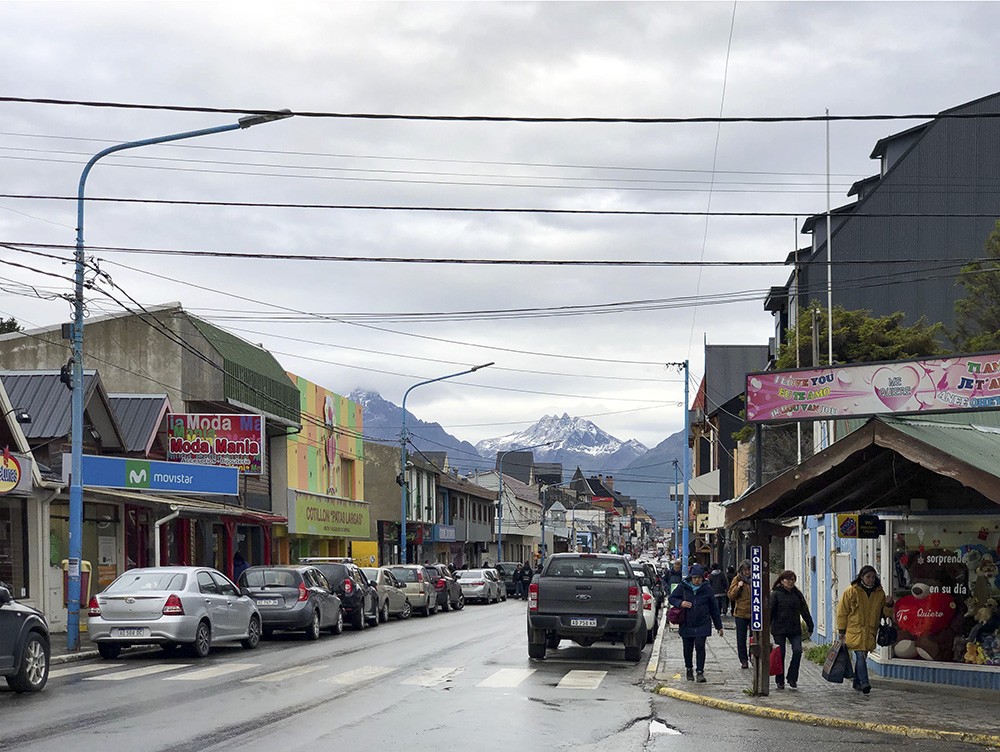
The main street of Ushuaia today with a hotchpotch of hotels, shops and cafes catering to the tourists and locals alike.
The church on the main street, a reminder that this city was founded by missionaries.
A typical tourist shop and cafe with images of penguins, a whale tail and the slogan ‘world’s end’.
A constant reminder of the city’s penal origins with the ‘around town’ tour bus and driver accordingly embellished.
Also visible around town – posters and information about the historic and current importance of shipping and tourism …
… and during the summer season, there are always several cruise ships waiting for a new batch of explorers to board.
Walking about town, there were several houses that caught my eye, like this brightly painted one.
Bright flowers in one of the gardens along the main street.
Lovely wooden fretwork on this house and a whale weathervane atop.
Purple seems to be a popular colour around town and this house sported a lovely weathervane also with a prancing horse.
Restaurants not only advertised their menu, but the real thing as well – lamb al asador in the window,
And a glass of the excellent Argentinian Malbec goes well with everything, especially warming in a cool climate.
Wandering after dinner, a cruise ship lit against the evening sky reminded us of our big adventure starting the next evening.
The Tierra del Fuego National Park is not far from the city of Ushuaia, and it buts up against the border with Chile. We spent a morning there, starting with a ride on the ‘Tren del Fin del Mundo’, the track of which was built and began its life as transport for the convicts out to the forests to fell the trees for building the houses of the city. Around 90 inmates with their feet shackled and 30 armed guards would make the trip along this track towards the forest on wooden carts. The prisoners evidently preferred spending all day chopping wood in extreme conditions, as it was the closest they could get to freedom. The track was abandoned for more than 40 years but in 1994 it was opened again and the little train allows a charming slow trip into the park.
A wooden board at the entrance to the train station.
A couple of trains chug back and forth into the park, passing midway where there is a stop to see a waterfall,
and have your photo taken should you want that as a memory.
A meandering river, forests and mountains, and to start – blue skies.
A brisk walk up to the Macarena Cascade and then back on the train, squeezed six to a compartment.
The rail-line snaked along the river, past regrowth forests and through green pastures …
Snowclad mountains as a backdrop and wild horses grazing, the sky a little more ominous.
Within the park, nothing is cut or removed anymore, but the regrowth is slow.
The red train, about to return …
… and our green one just arrived.
Once in the park itself, we walked a trail through scrubland and low trees to a beautiful viewpoint overlooking a lake. On the way our guide pointed out the different trees and plants and for us, as New Zealanders, we recognised so many similarities to our own southern forests – beech trees and lichens, and a rather melancholy mistiness.
A kind of mistletoe festooned many of the trees.
Flowering shrubs along the way, and the sky getting darker by the minute.
Viewpoint through the trees across a pretty lake.
A tiny tourist boat gives a bright spot of colour by the island beautifully reflected in the middle of the lake.
Had to do the touristy thing and have our photo snapped by our guide with a splendid backdrop.
Berries and flowers flourishing everywhere between the fallen and new growth trees.
A still grey lake, with clouds masking the mountains. This so reminded us of our South Island NZ lakes on a winter day.
A cabin in the woods near the Visitor’s Centre, used for what I am not sure.
A smaller lake with lovely reflections, and the rain soon upon us.
The rain sweeping on over the lake, hoods up and happily the Visitors Centre close by to wait out the rain. It didn’t last long!
A rather pretty goose plodded by. Think it could be a Ashy-headed goose but not sure – anyone out there know?
Driving back to Ushuaia, the weather was closing in and didn’t bode well for our evening departure on the Ocean Endeavour.
The Argentinian flag flies over the Tierra del Fuego National Park. Chile is just across the border.
Hope you have enjoyed this short story about Ushuaia and the Tierra del Fuego National Park, and my next offering will be the start of our expedition down the Beagle Channel, across the Drake Passage to the South Shetland Islands.
Will it be the Drake Lake or the Drake Shake, the local terms for a smooth or rough crossing?
Until then, all good wishes,
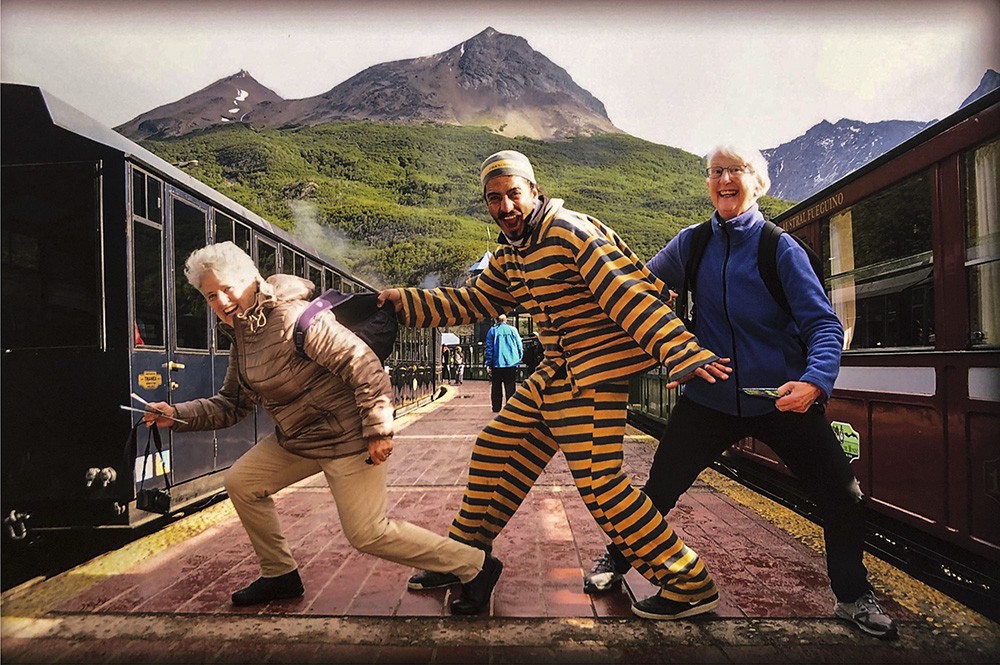
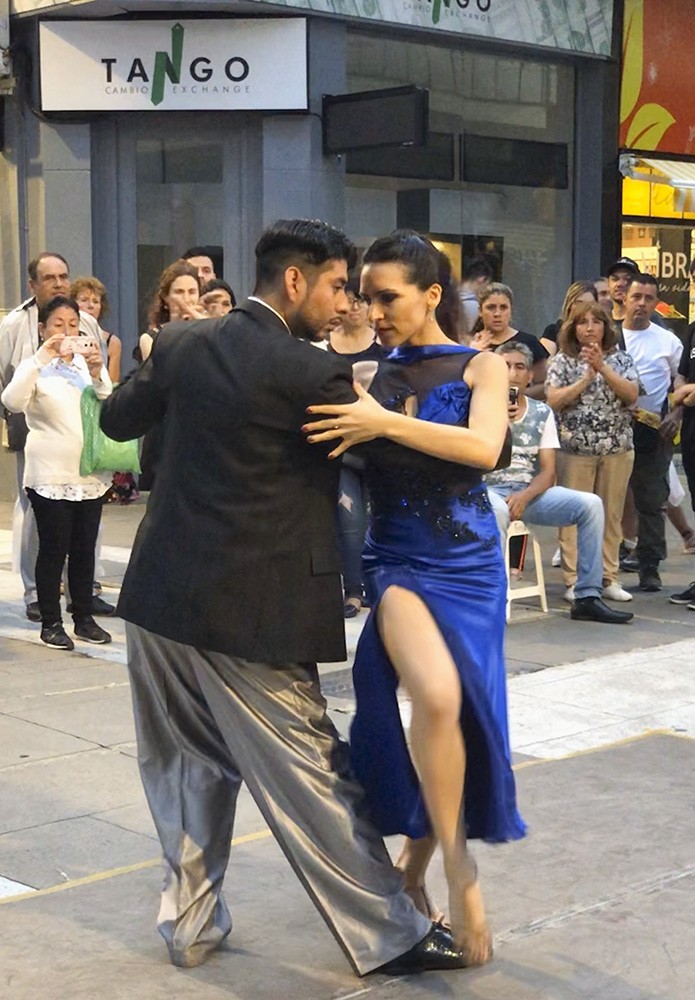
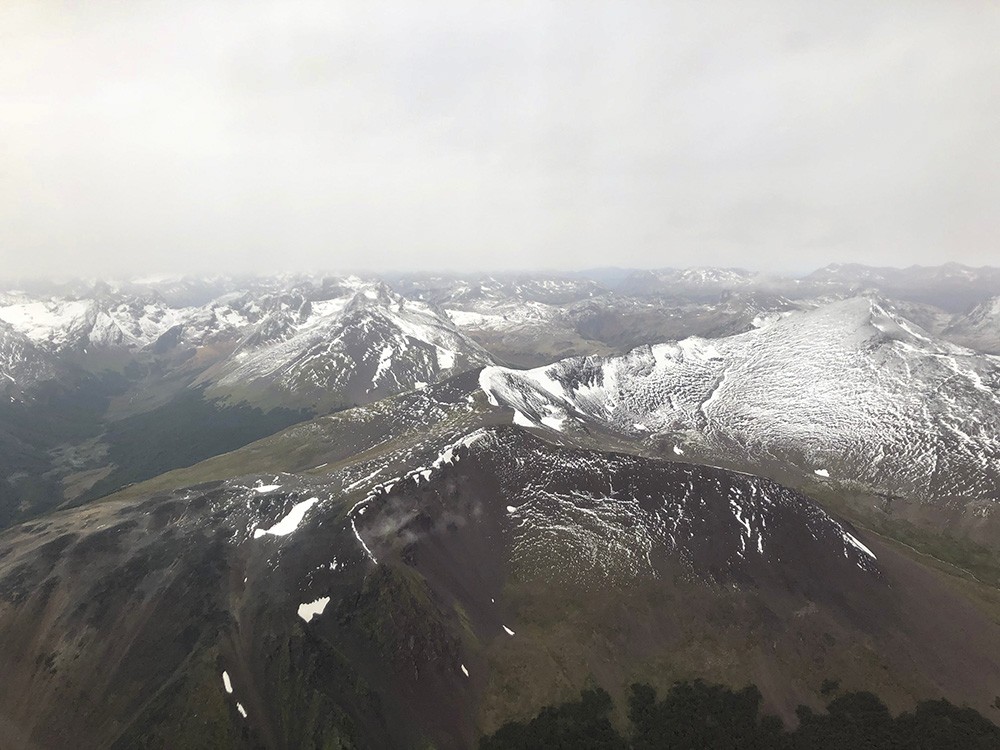
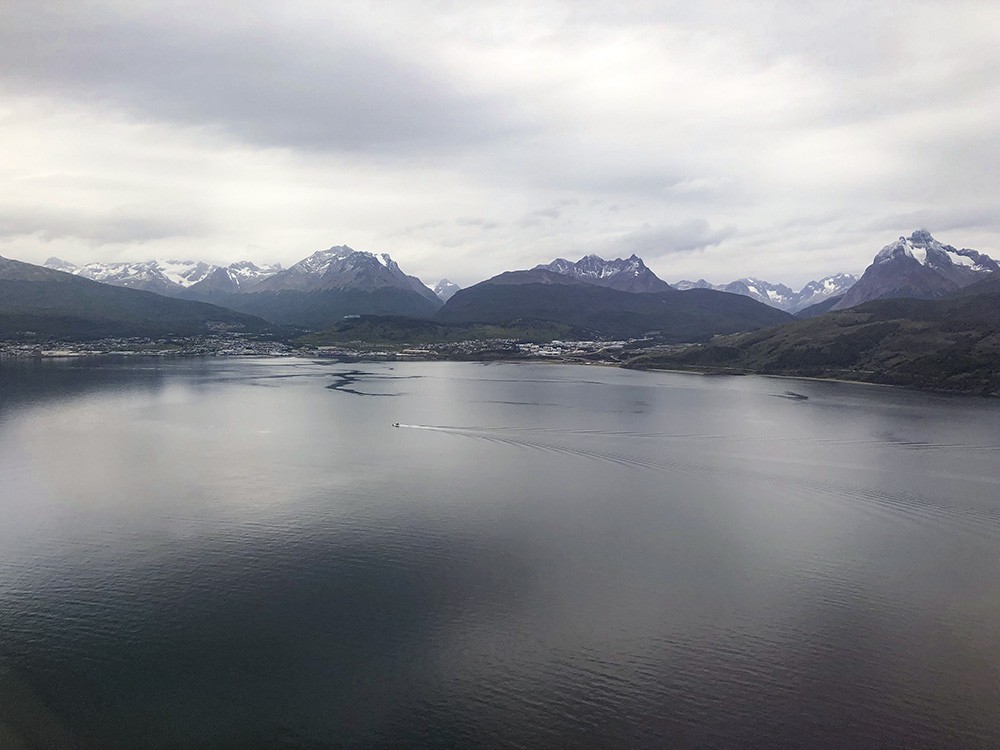
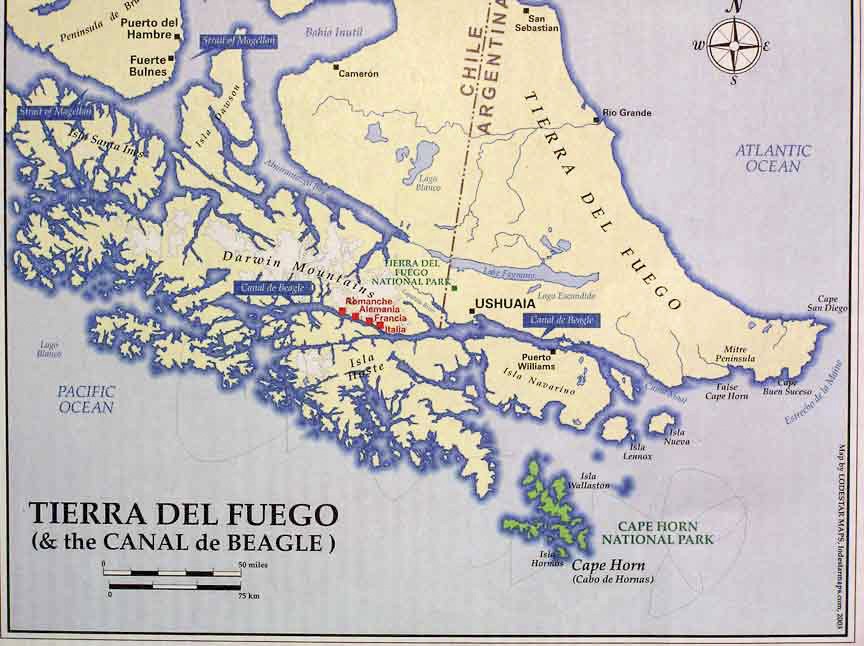
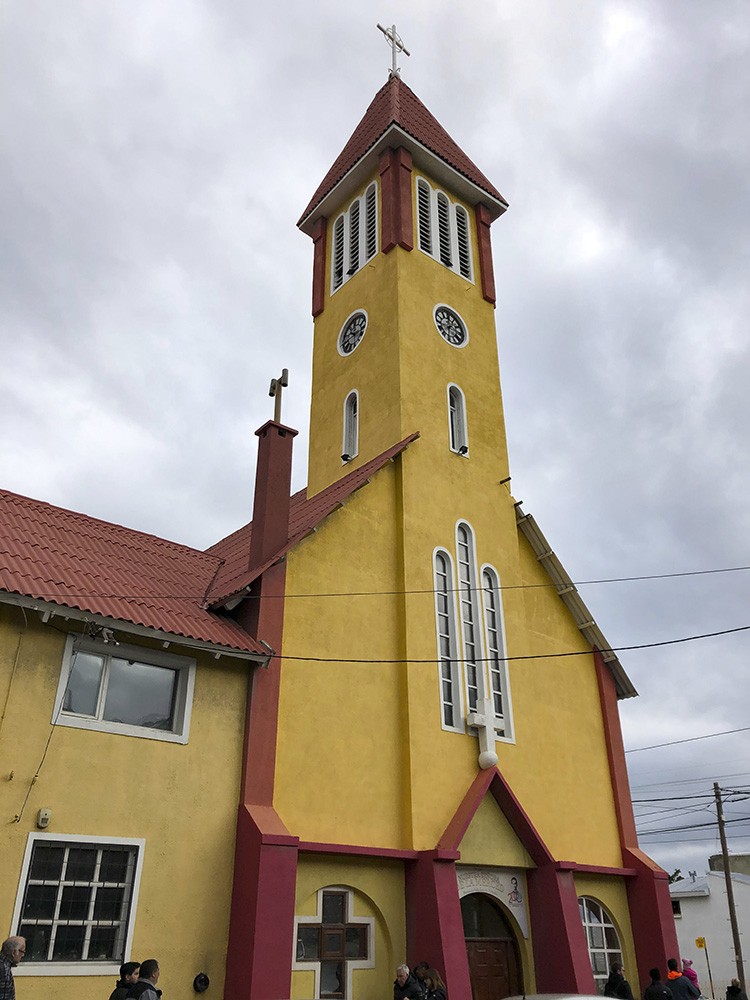
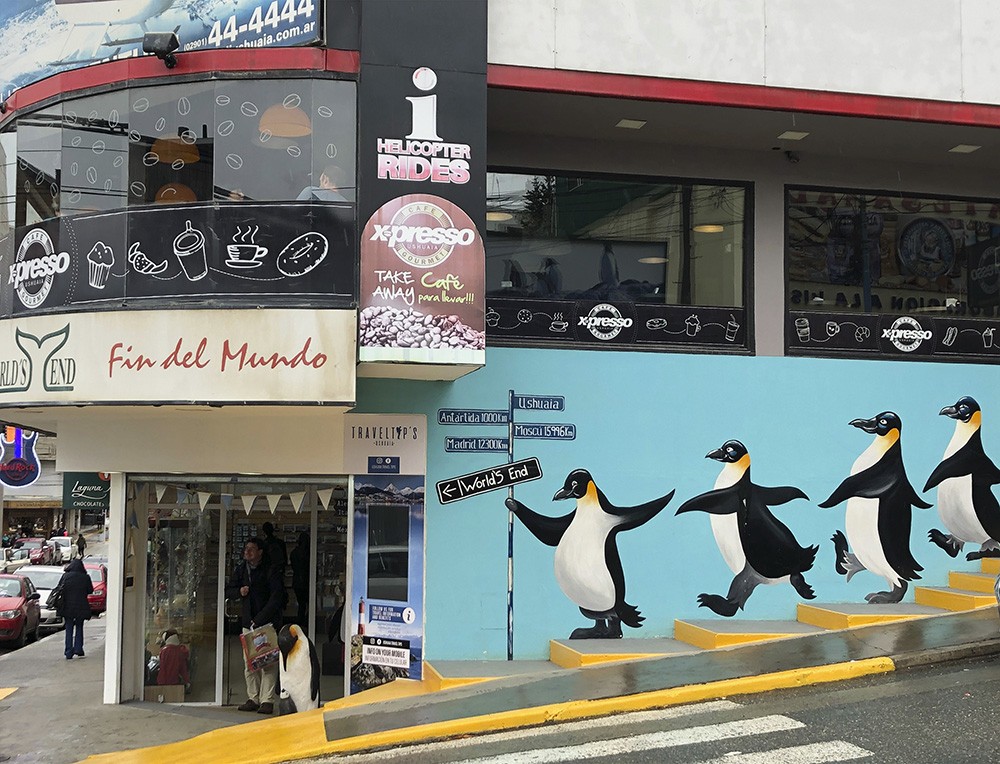
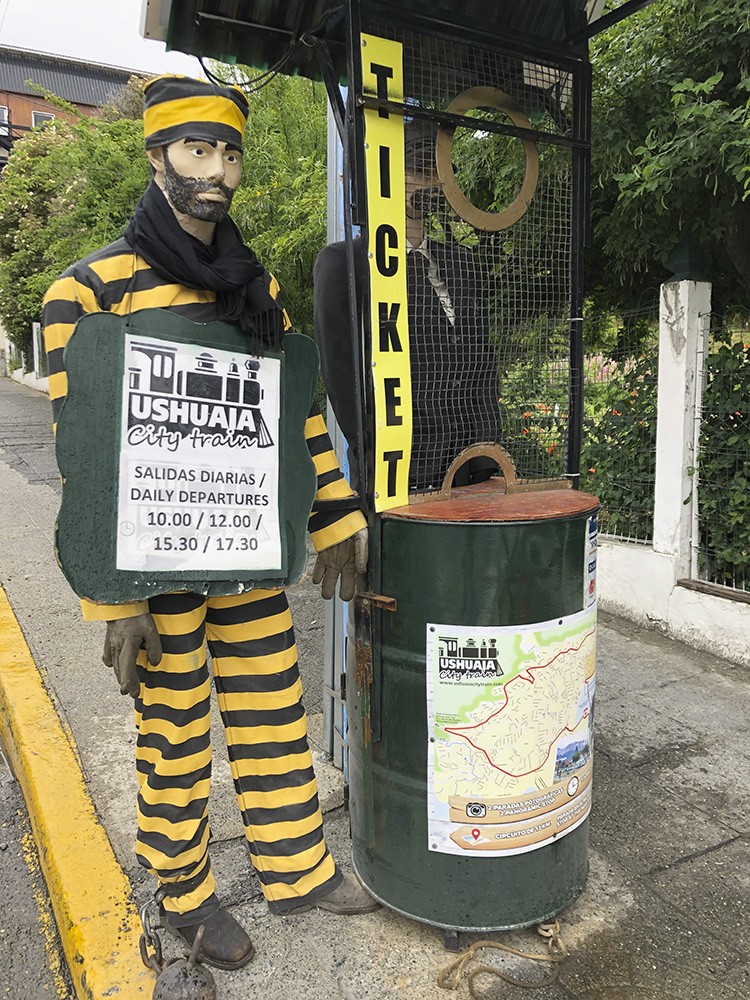
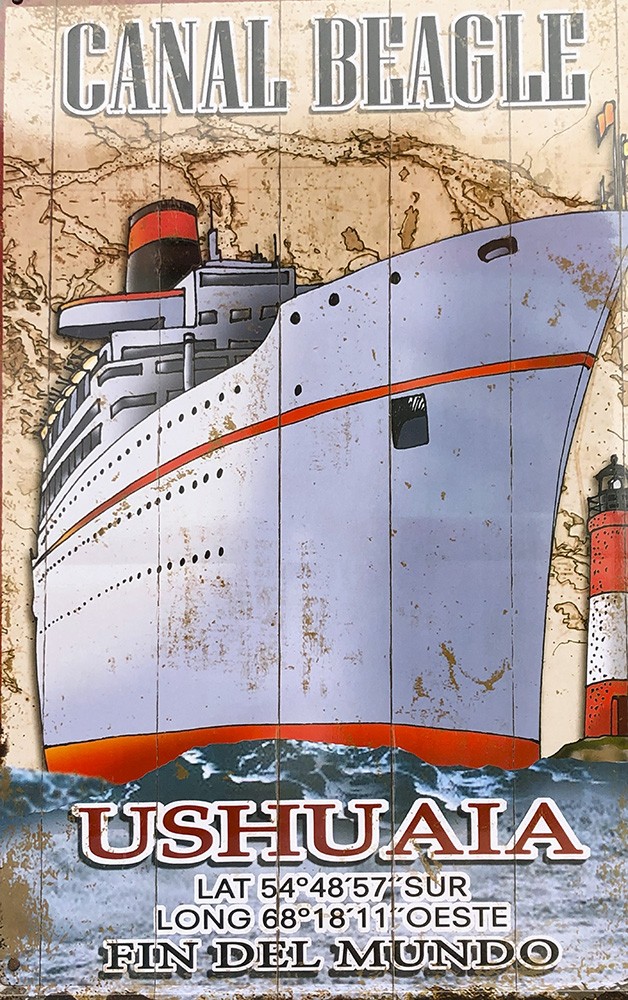
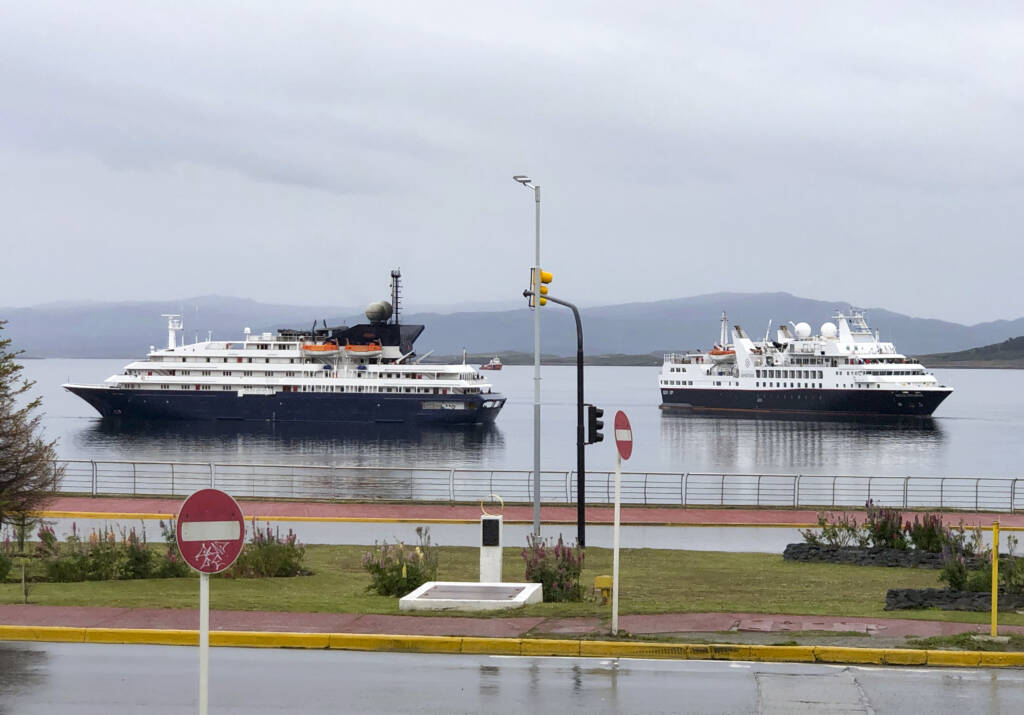
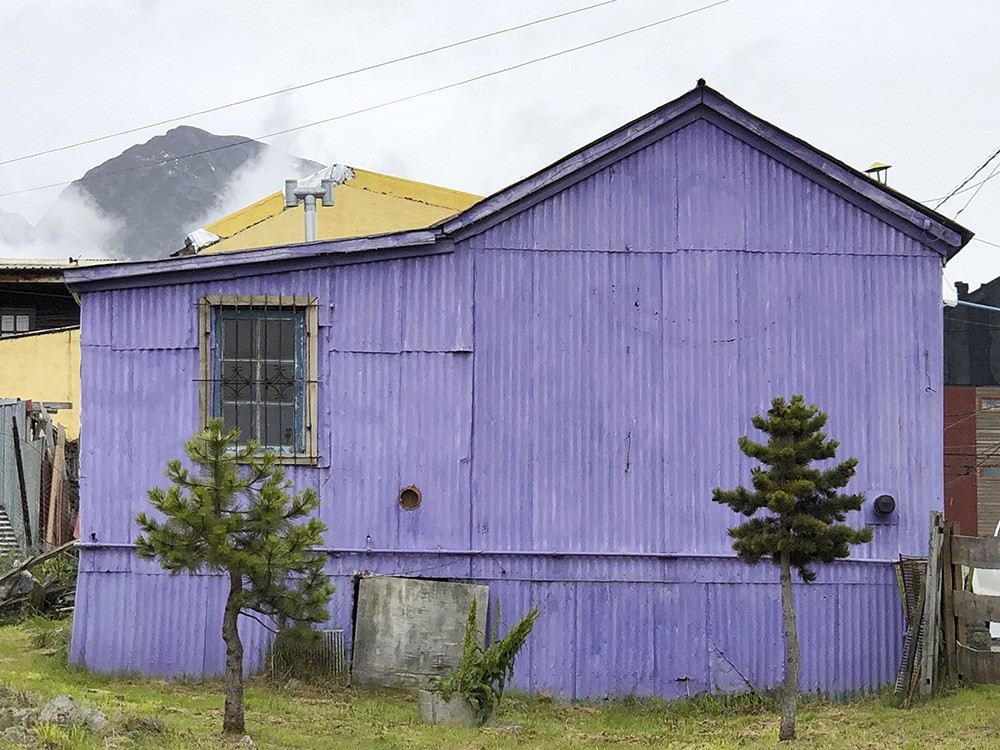
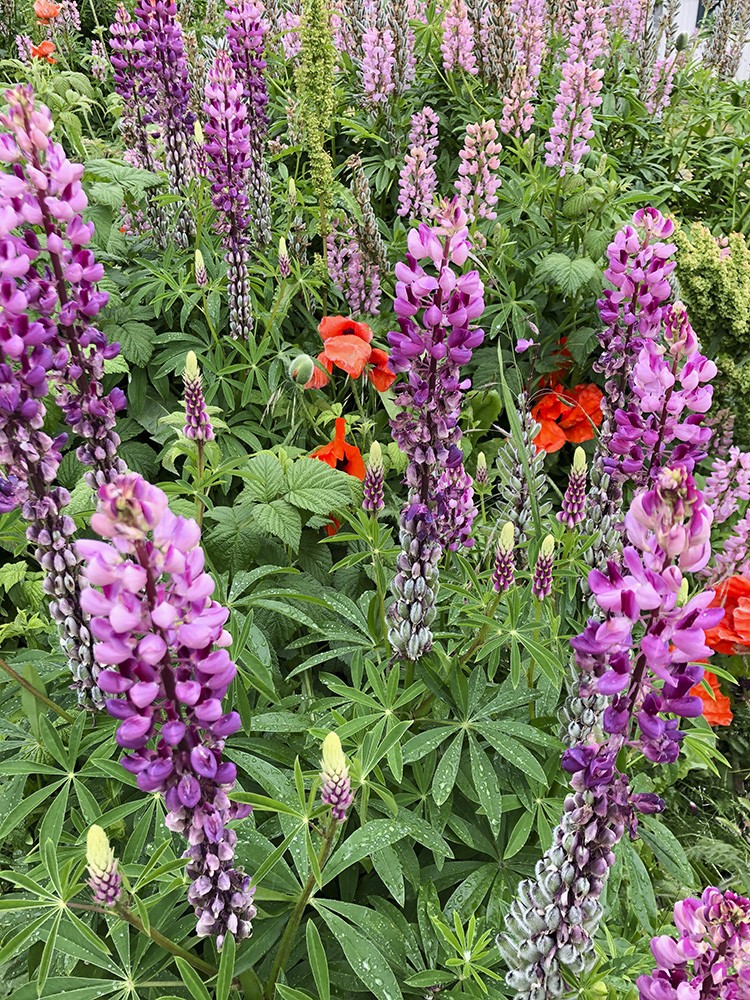
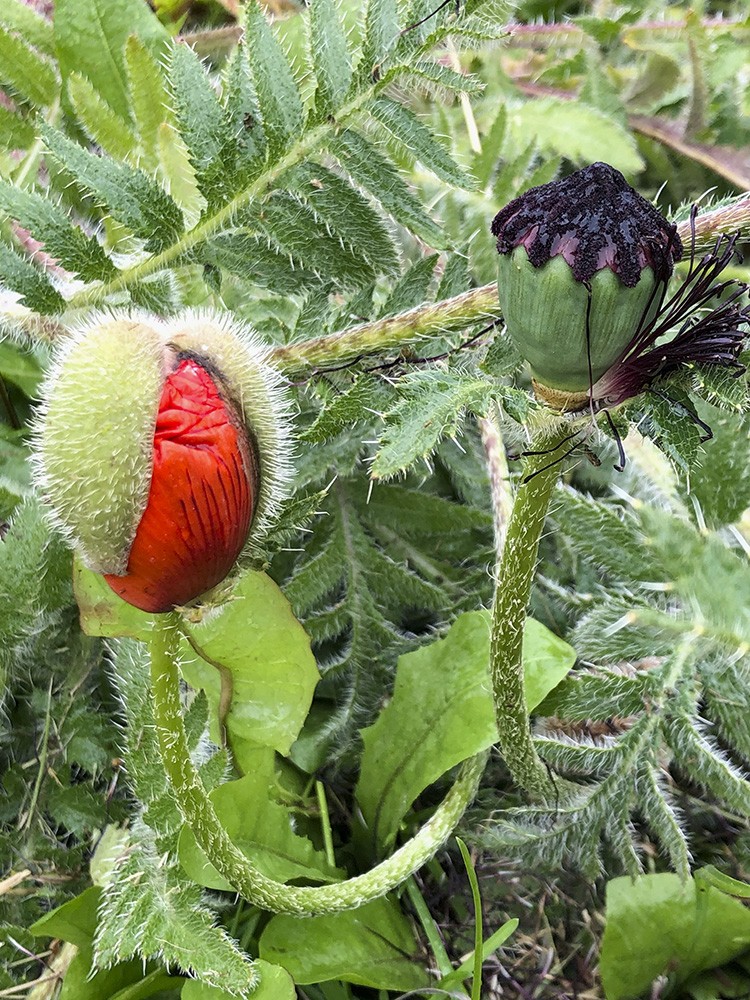
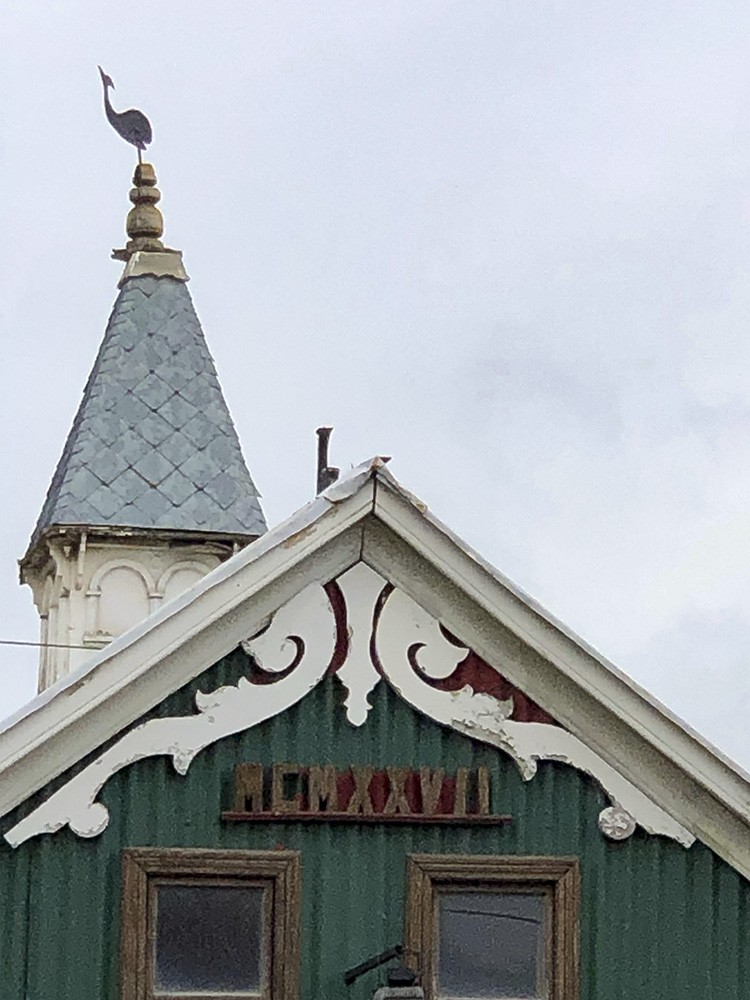
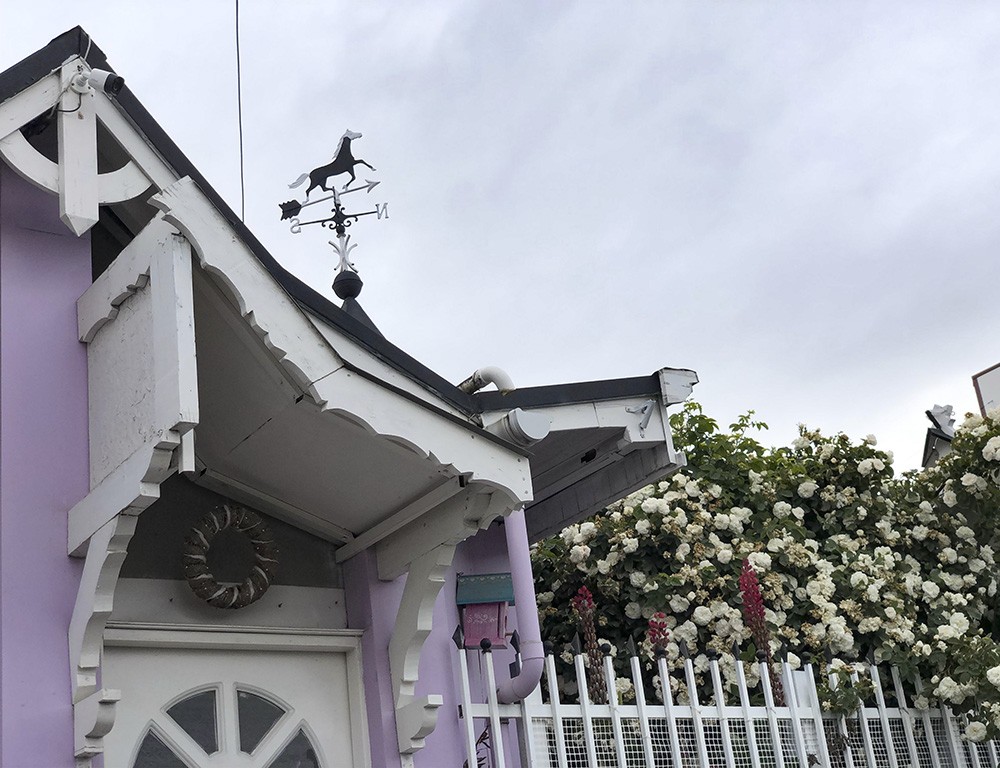
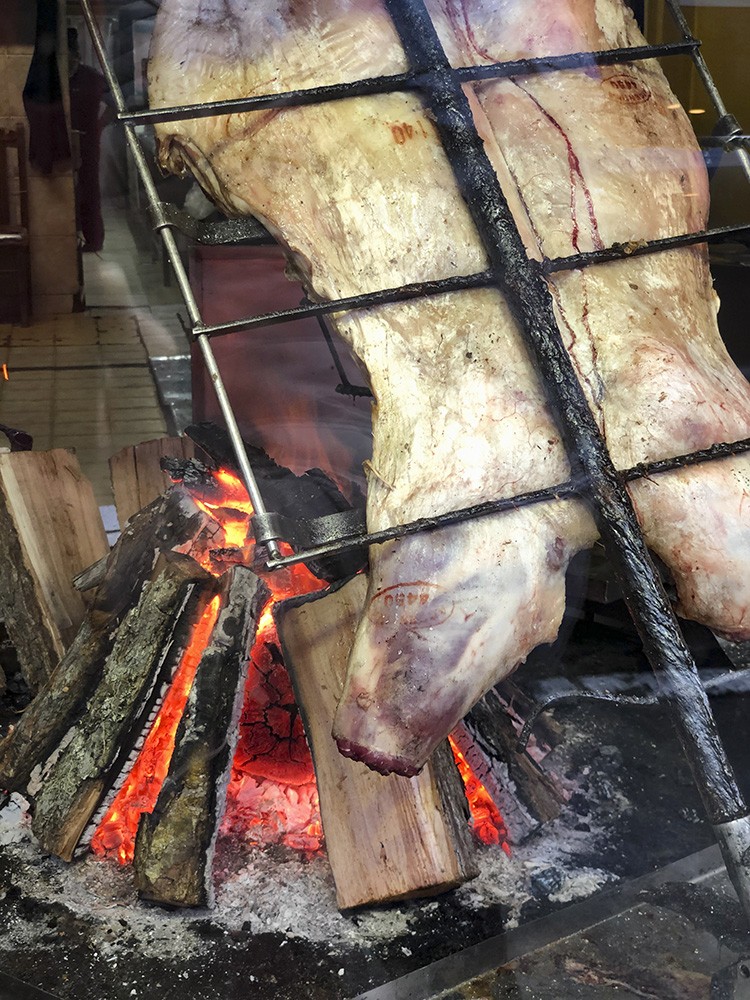

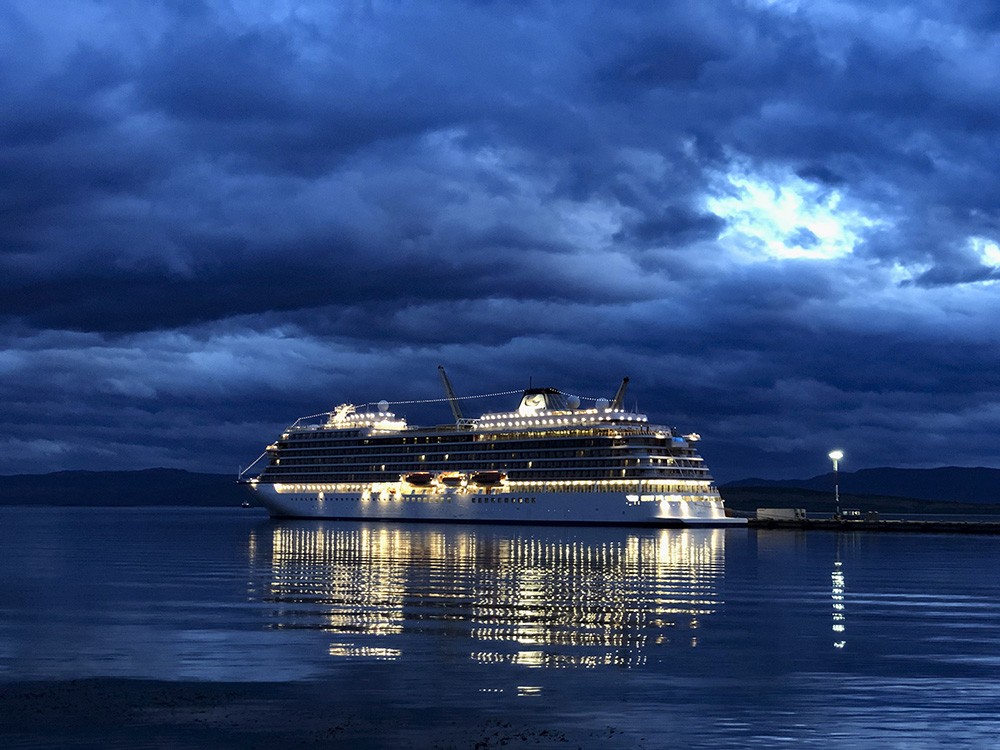
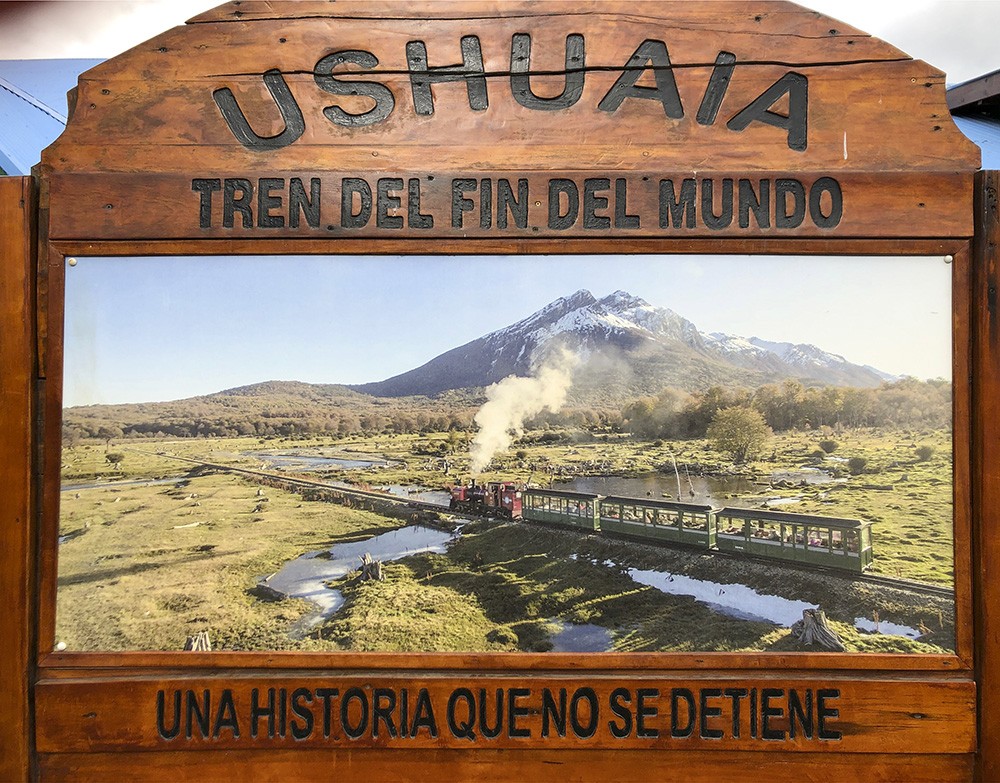
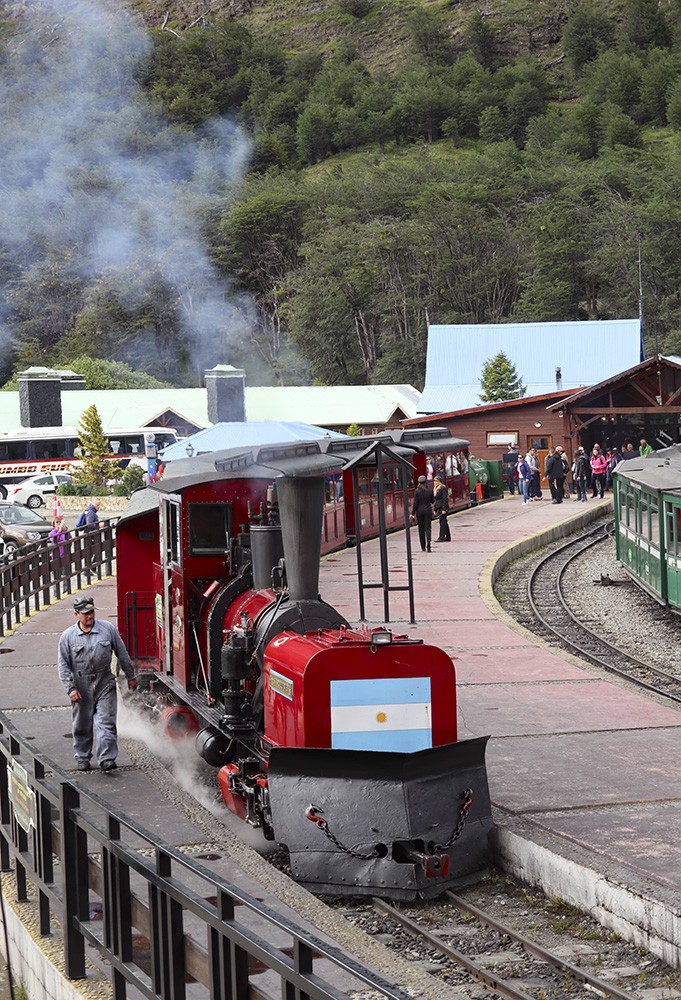
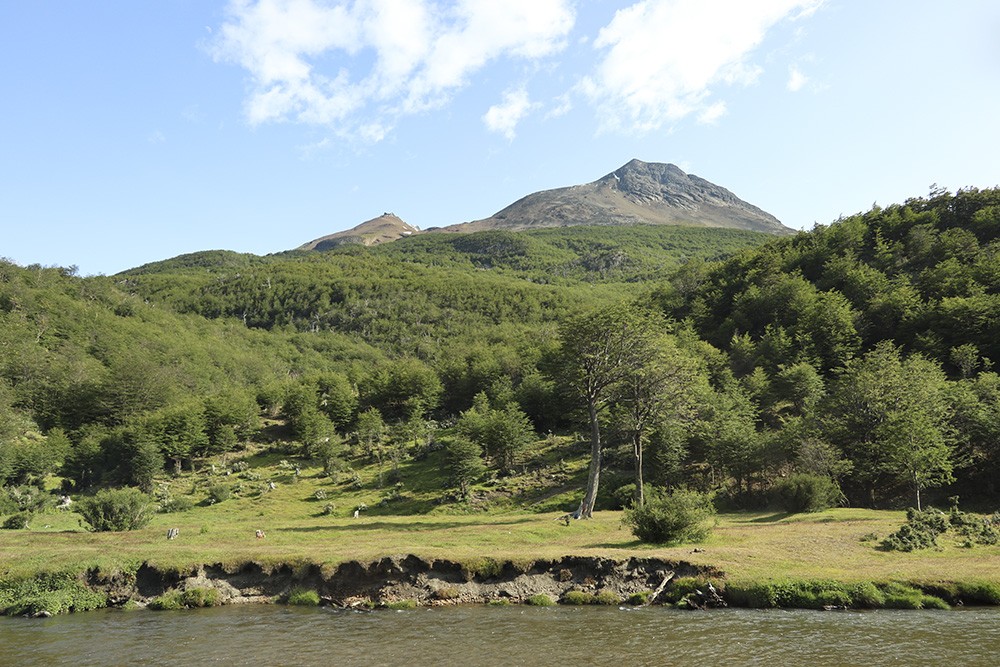
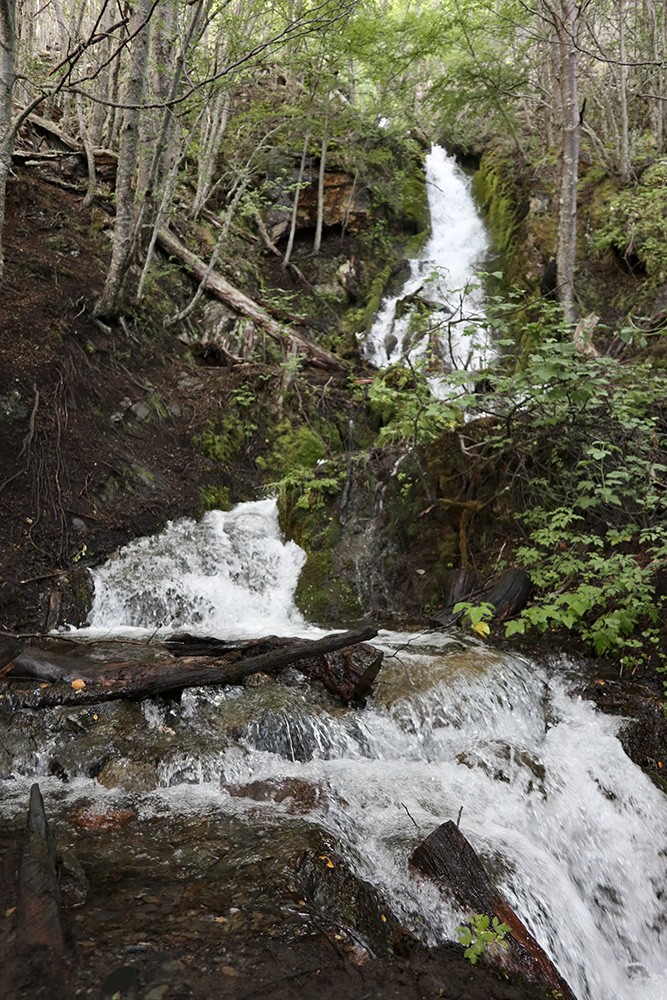
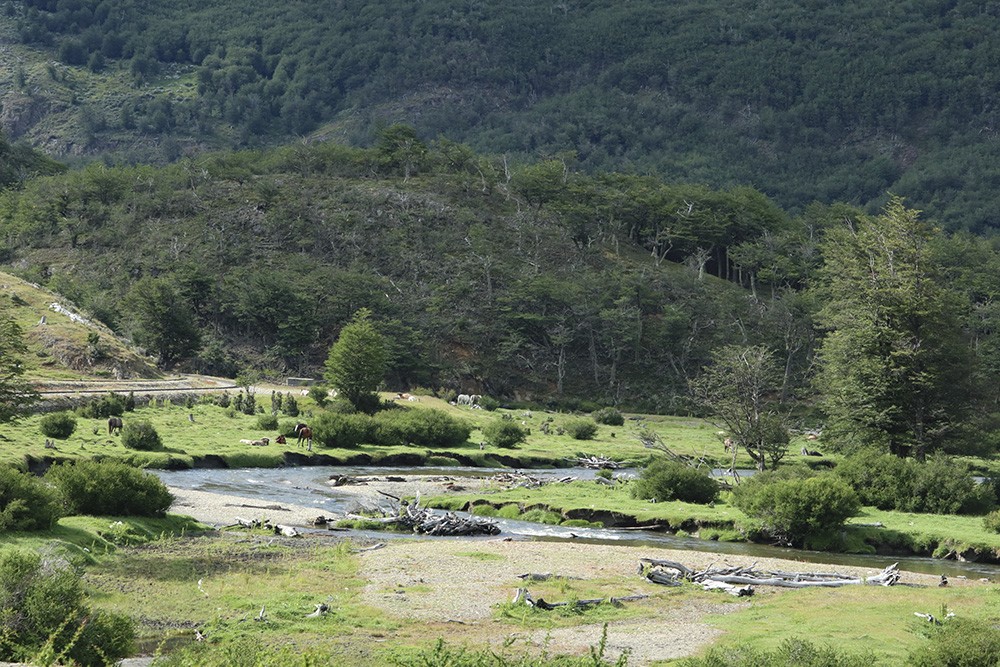
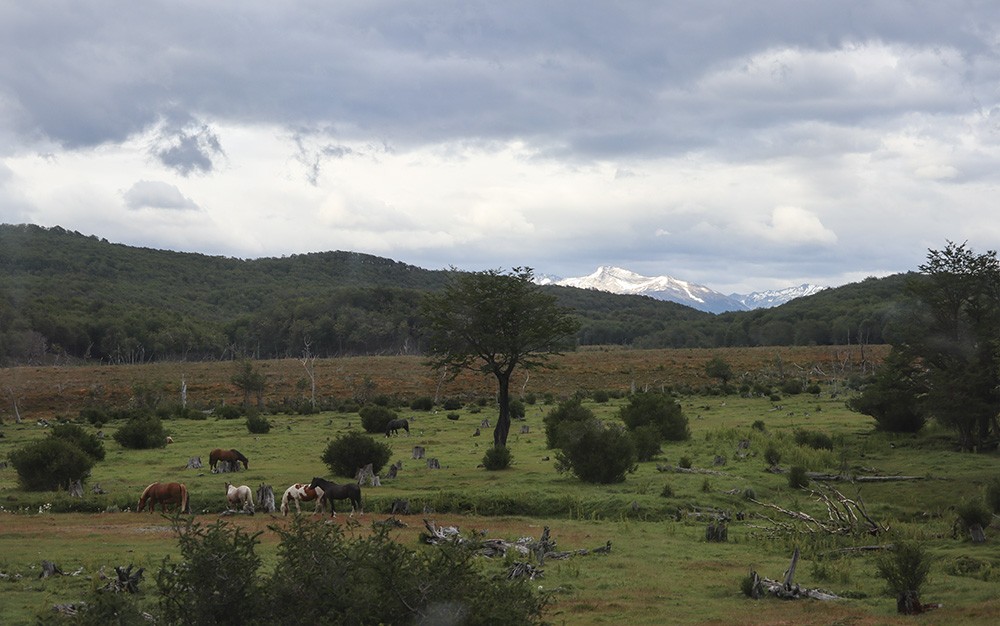
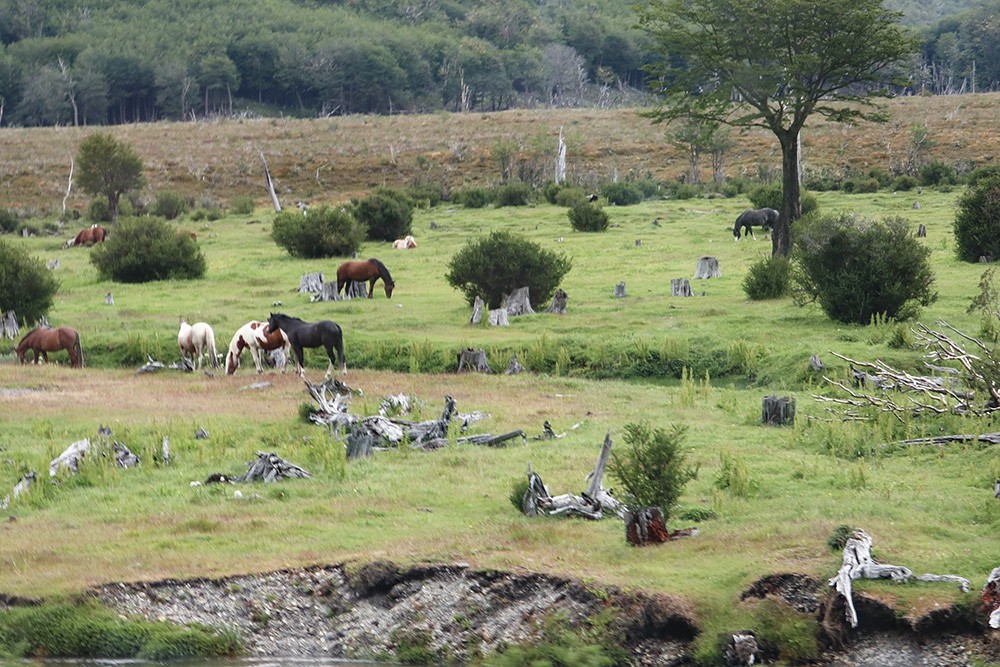
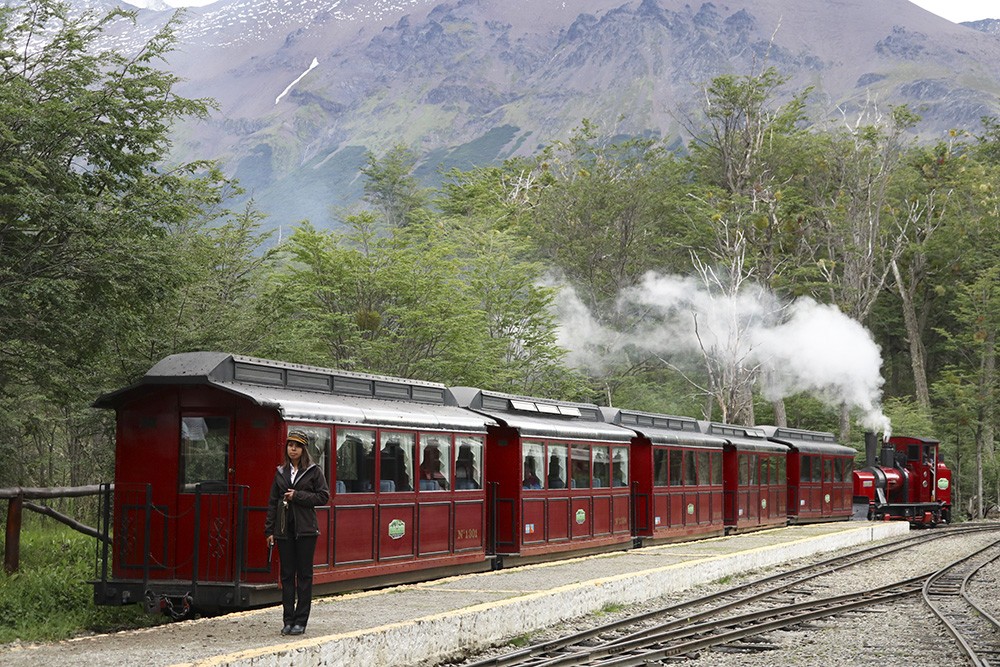
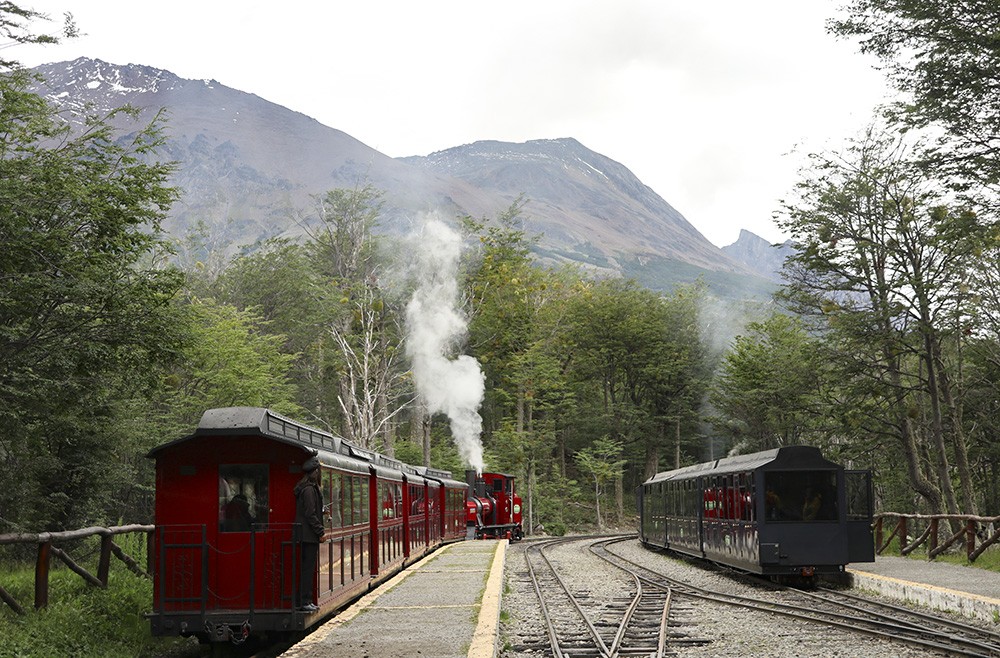
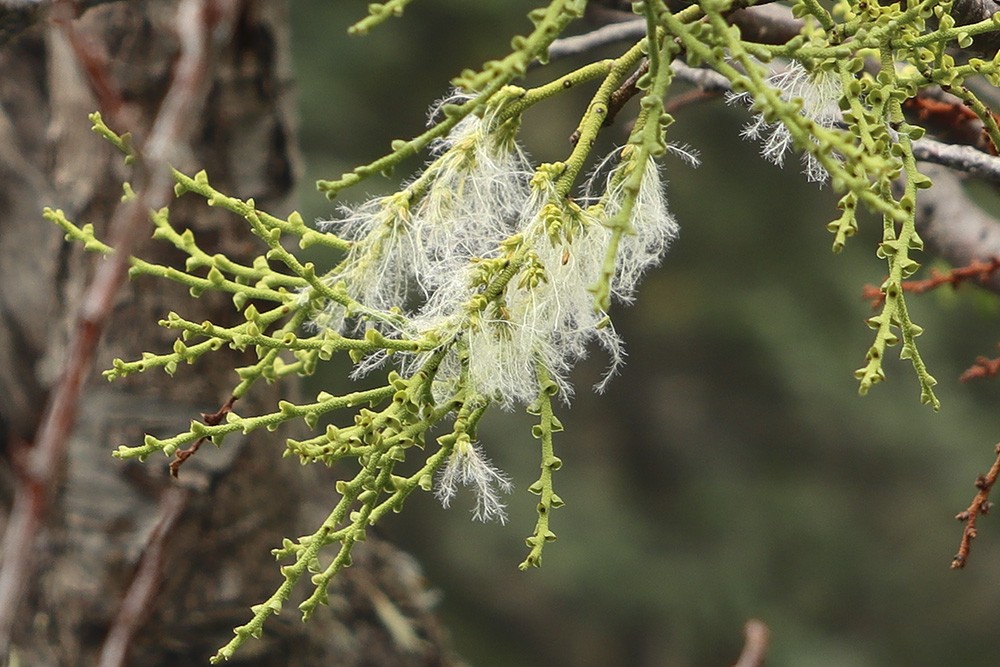
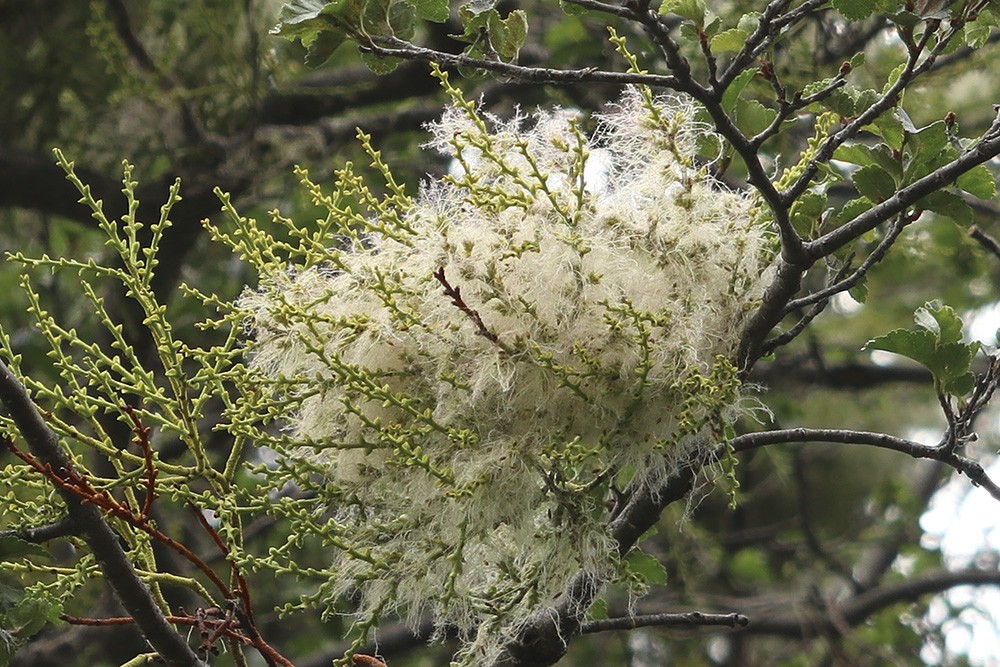
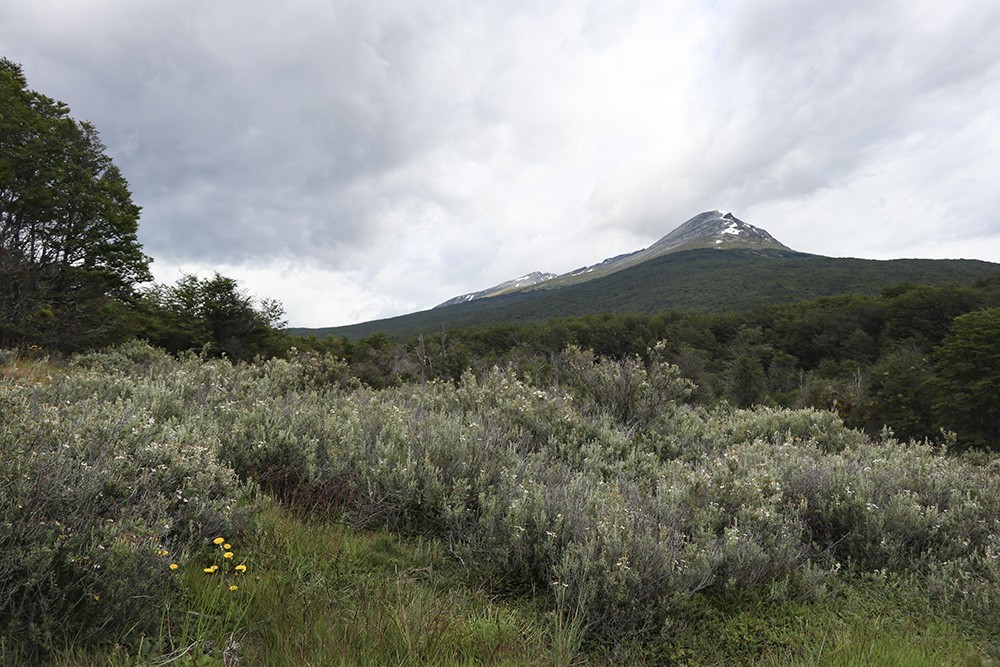
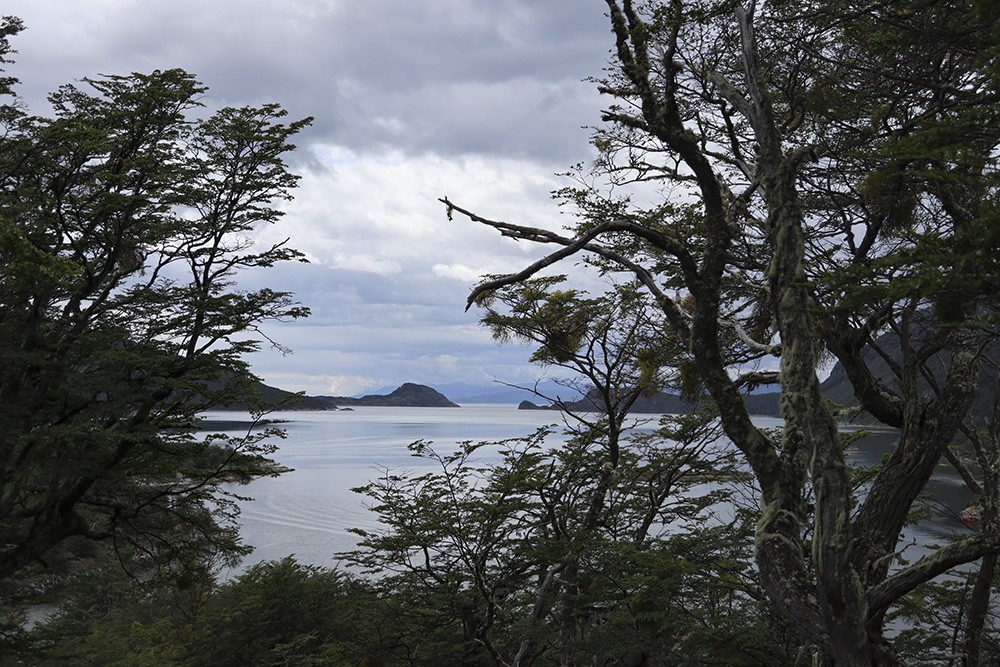
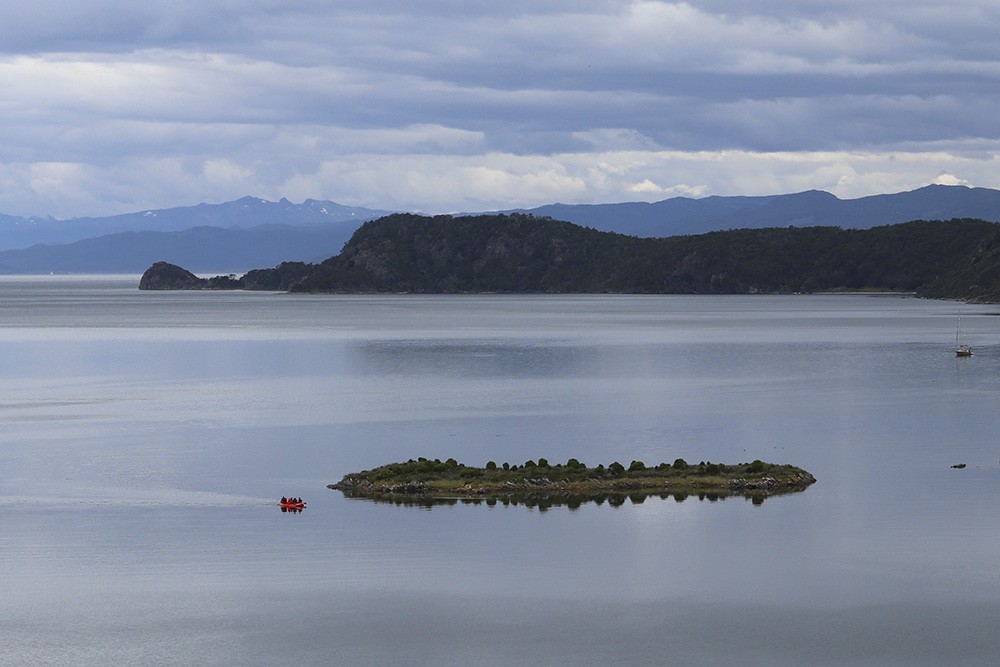
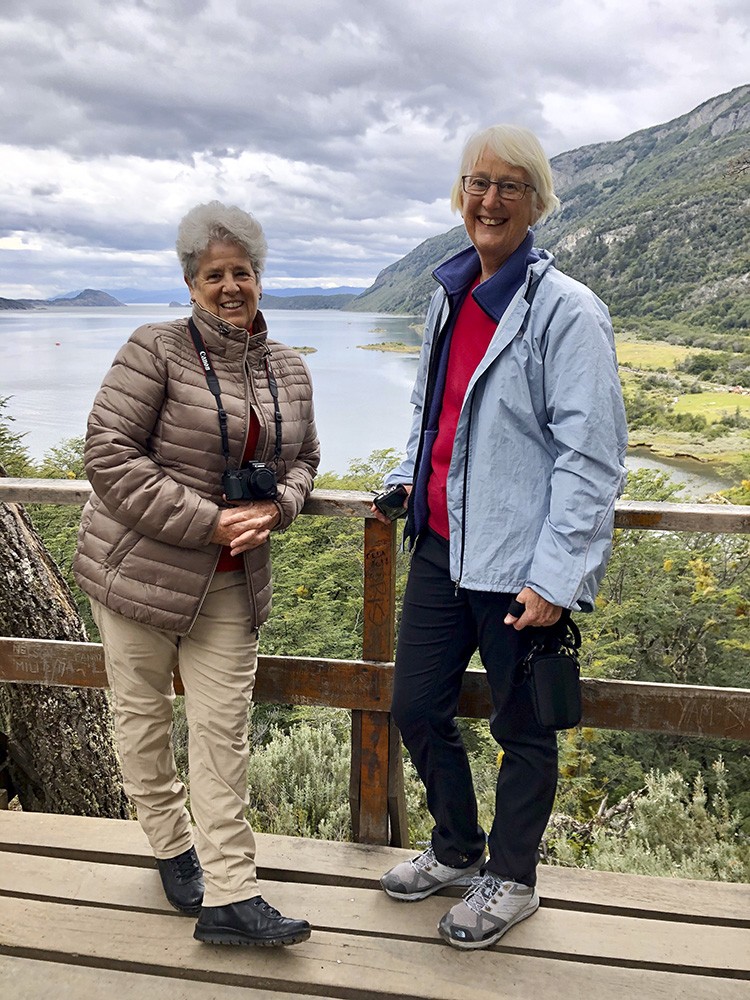
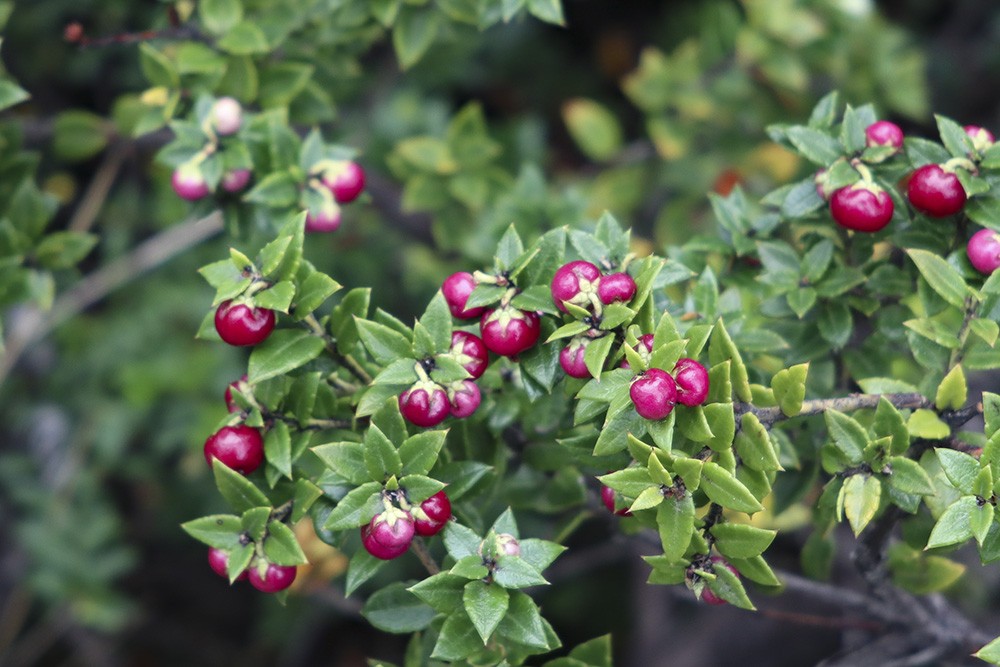
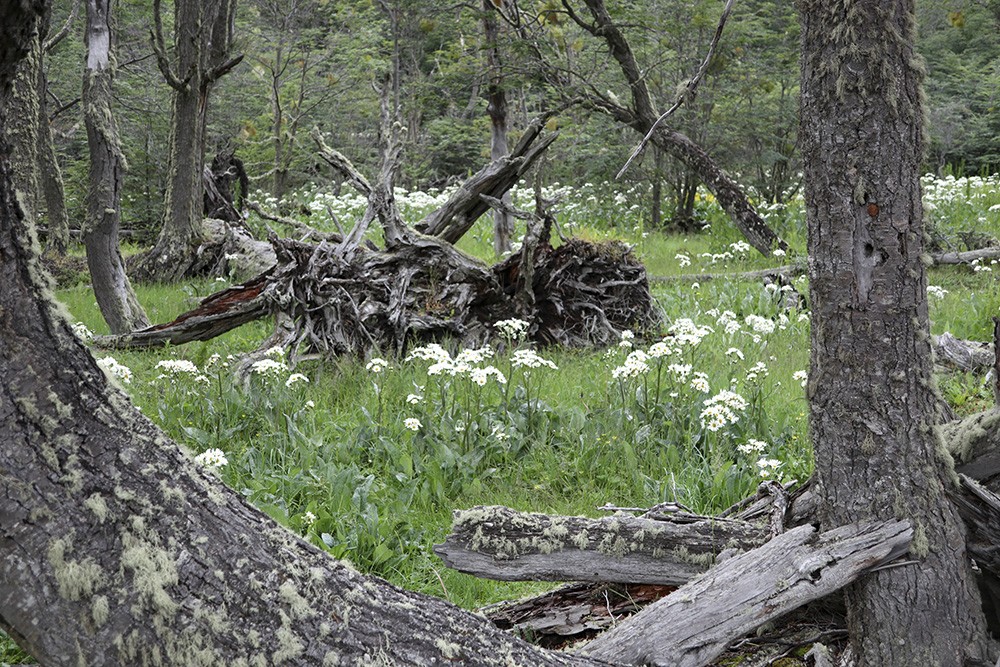
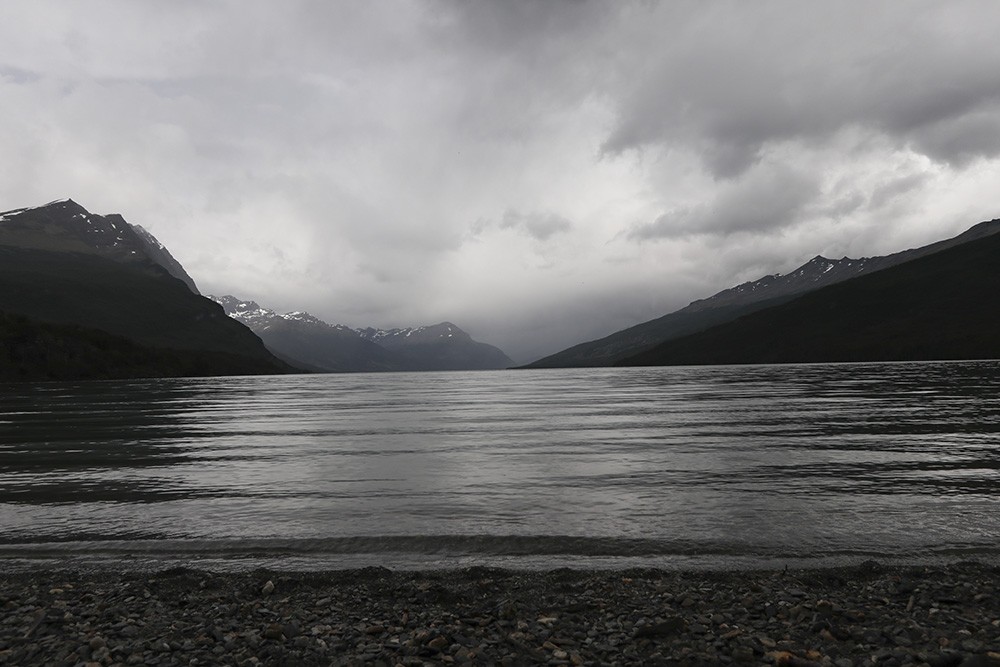
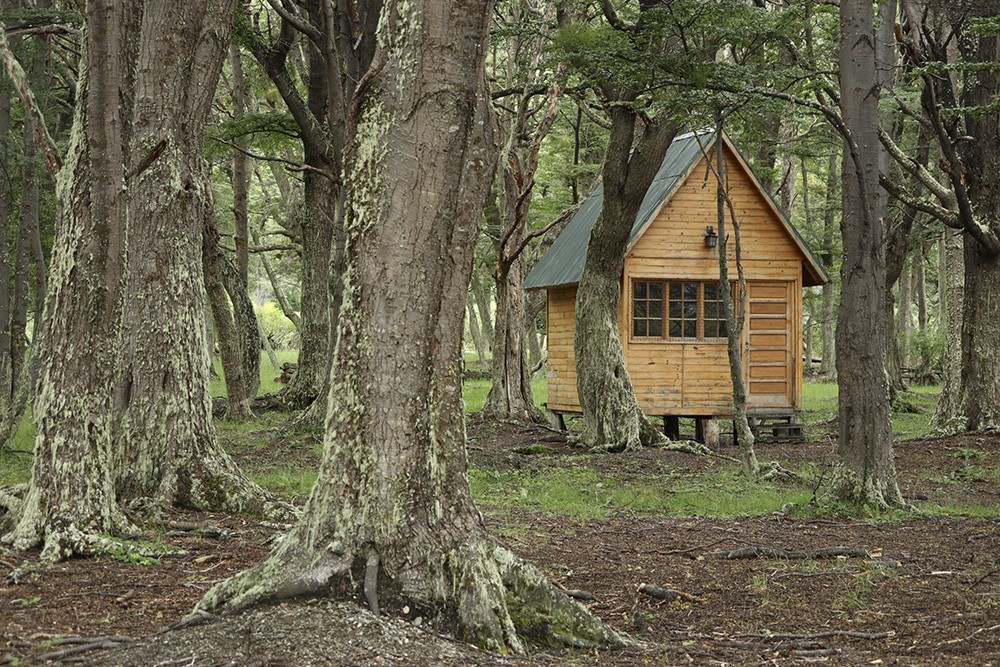
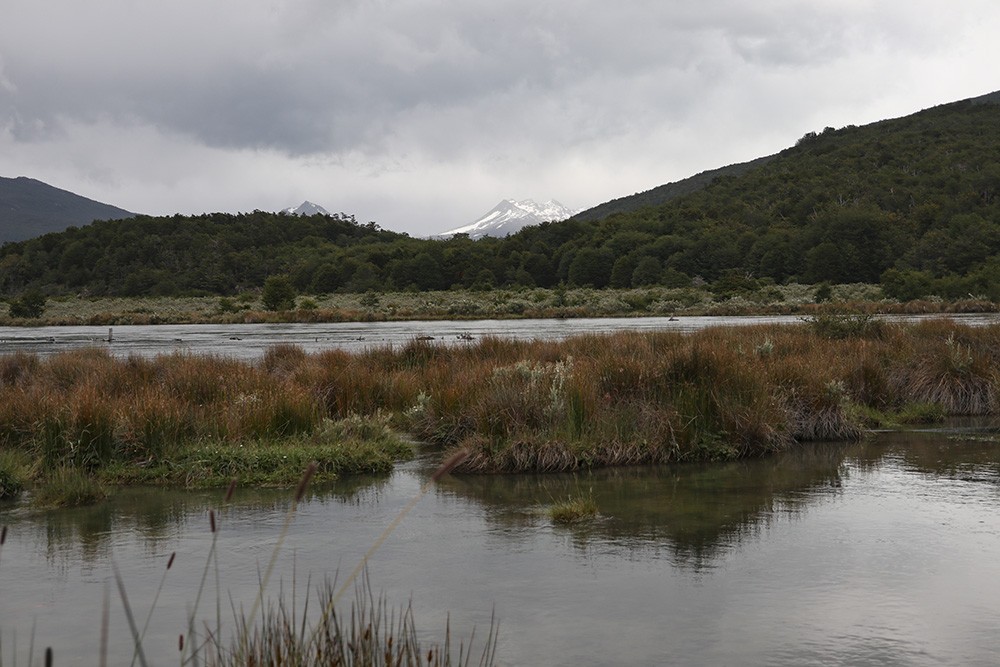
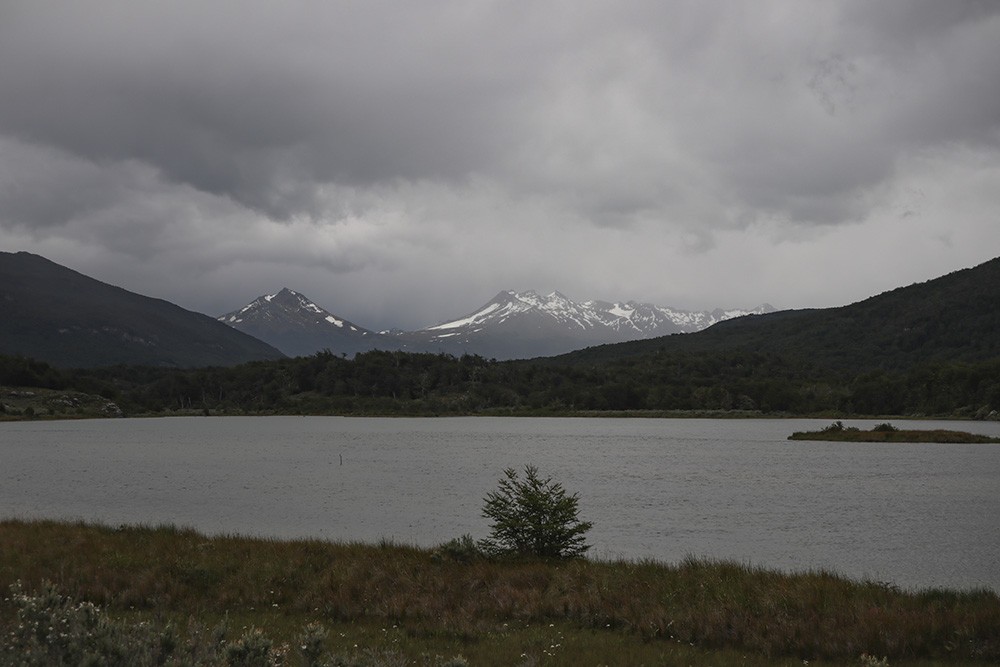
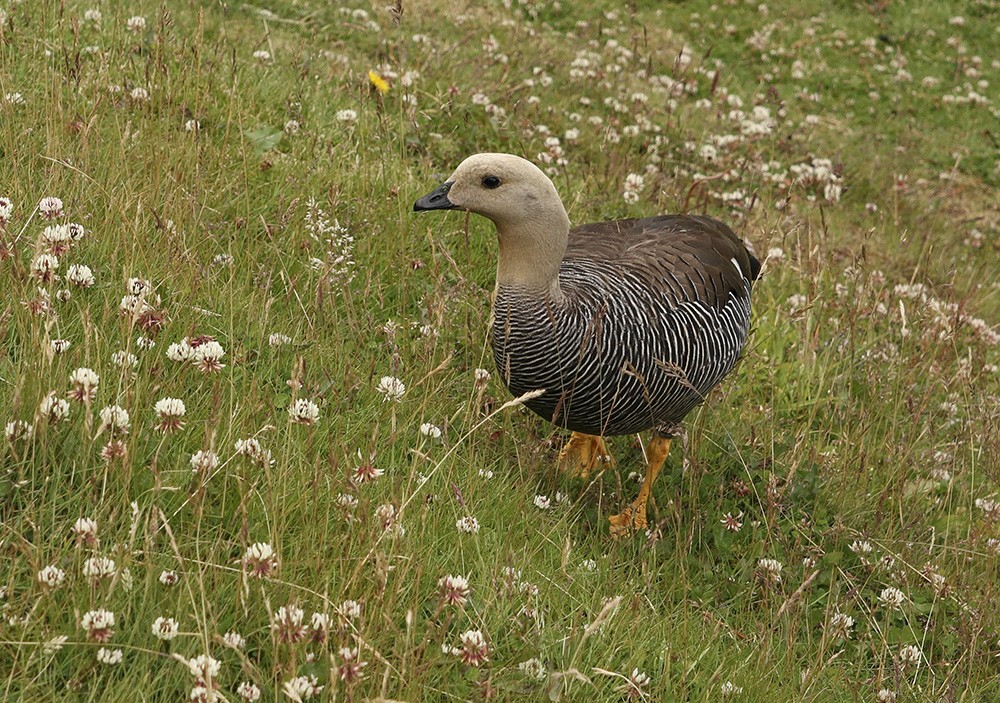
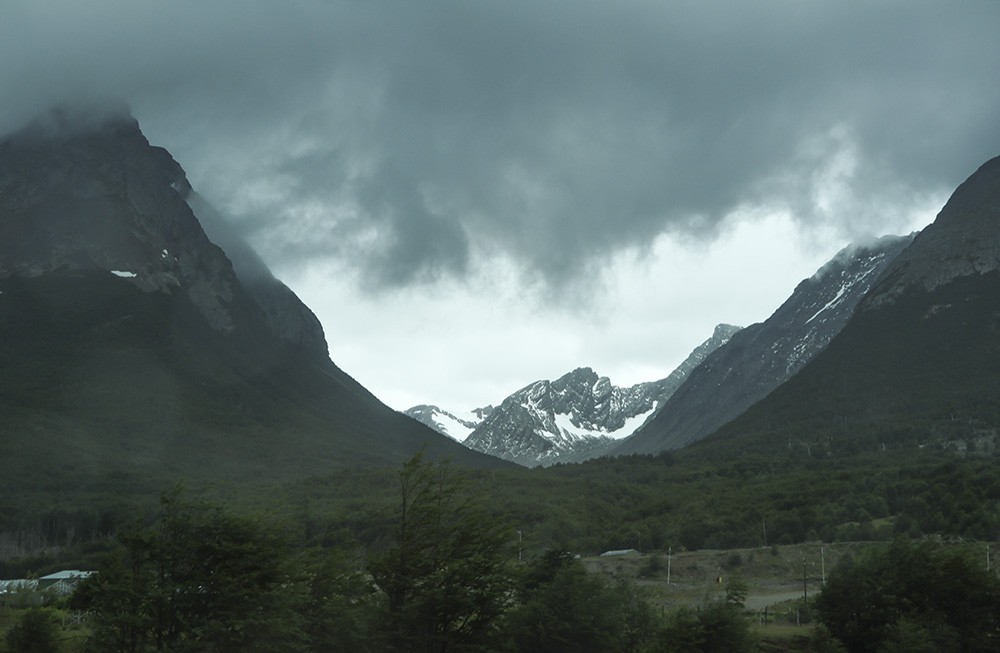
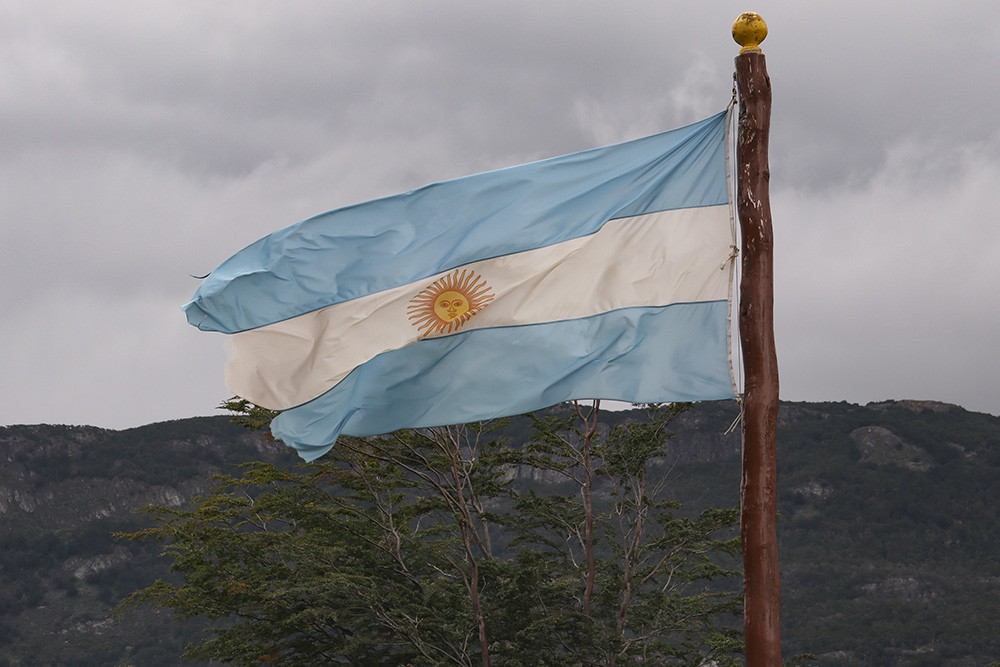
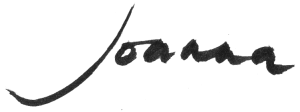
Loved the photos…..the tango, the lamb roasting over the inside fire and the bottle of Malbec brought back many great memories of Argentina! I also enjoyed your commentary as usual and I’m looking forward to the next installment!